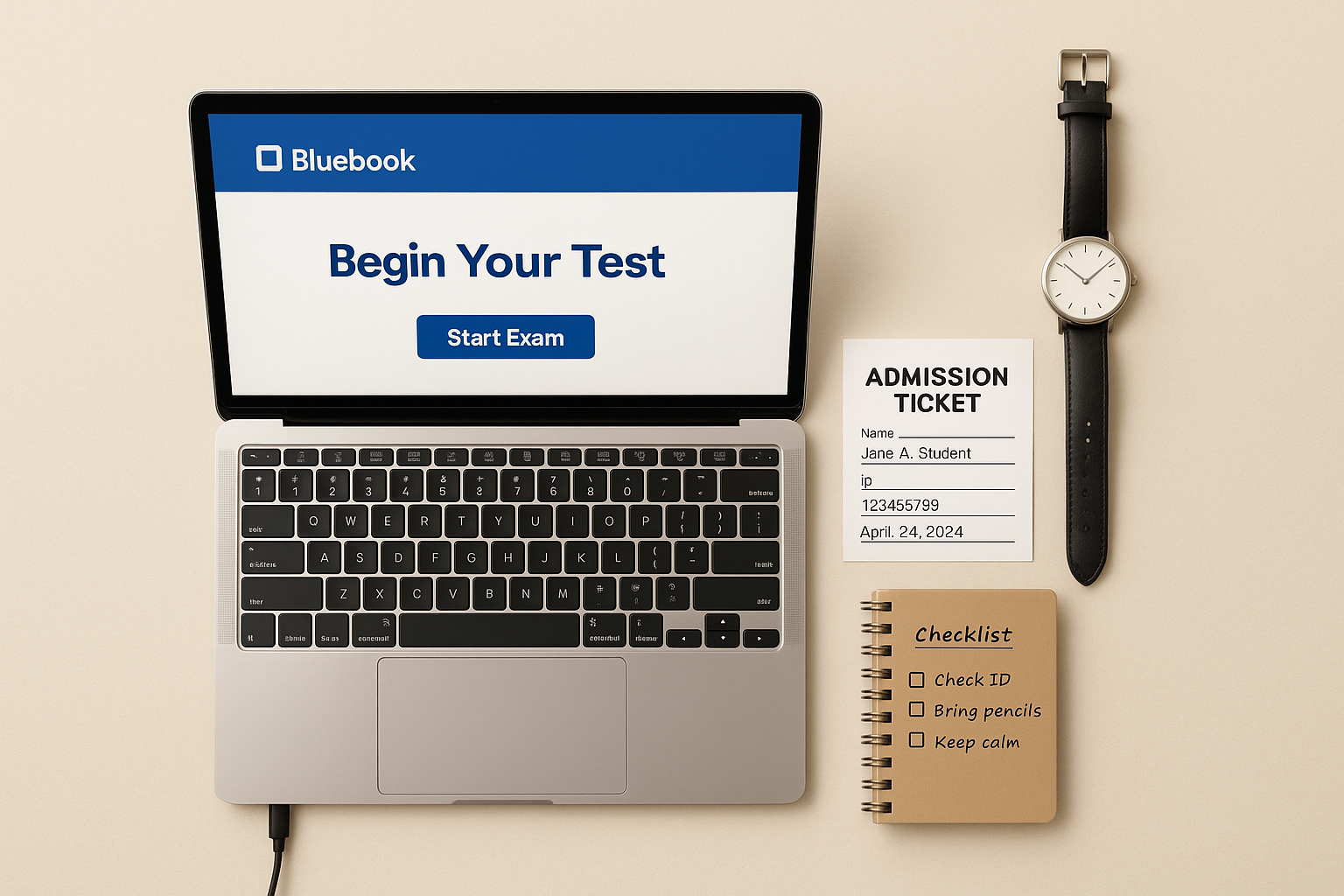Why 90 Days Works: Focused, Realistic, and Transformative
Pull up a chair. Ninety days is a sweet spot: long enough to build deep habits and address weak spots, but short enough to keep momentum, urgency, and focus. Whether you’re aiming to improve by a handful of points or chase a major jump, this plan turns the overwhelm into simple, everyday actions.
This guide treats your SAT prep like training for a race—smart practice, recovery, strategy, and a little celebration when you cross the finish line. It’s written for the Digital SAT era: built-in calculators in math sections, shorter reading passages, and the importance of practicing on the Bluebook app or other digital platforms. You’ll find timelines, concrete daily tasks, realistic practice schedules, and the kind of advice that actually helps you wake up and do the work.
Quick Orientation: What to Know About the Digital SAT
Before we dive into the 90-day roadmap, a quick orientation will save you anxiety later. The Digital SAT keeps the same core goals—reading and writing skills plus math reasoning—but the format is different: adaptive, faster in places, and delivered through approved devices. Practicing in the actual testing environment matters. That means full-length, timed digital practice sessions, and getting comfortable with the interface and digital navigation.
Key features to remember
- Shorter total test time but more time per question on average—so precision matters.
- Built-in calculator across the math portion—practice using it efficiently, not as a crutch.
- Shorter reading passages mean sharper, faster comprehension and efficient note-taking.
- Digital practice with the Bluebook app or official digital practice is essential for technical familiarity.

The 90-Day Plan at a Glance
Think of the 90 days as three 30-day phases: Diagnose & Build, Strengthen & Expand, and sharpen & simulate. Each phase has a clear focus so your practice compounds—skills, stamina, and test-smart strategies all build on one another.
| Phase | Days | Focus | Typical Weekly Structure |
|---|---|---|---|
| Phase 1: Diagnose & Build | 1–30 | Baseline test, core skills, daily habit formation | 3–4 practice sessions, focused content review, light timed sections |
| Phase 2: Strengthen & Expand | 31–60 | Targeted practice, strategy refinement, timed sections | 4–5 practice sessions, weekly full-section timed tests |
| Phase 3: Sharpen & Simulate | 61–90 | Full-length digital tests, pacing, stress management | 2 full digital practice tests per week, focused review, rest days |
Phase 1 — Days 1–30: Diagnose, Plan, and Build Habits
This phase is about taking stock and building sustainable habits. Your baseline tells you where you are and where to target your energy.
Day 1: Take a real, timed digital practice test
Don’t guess. Take a full-length diagnostic under test rules on the Bluebook app or other official digital practice. Treat it like test day: same start time, quiet space, and no distractions. The goal: honest data.
Analyze the result
- Which section cost you the most time?
- Which question types—data analysis, algebra, command of evidence, inference—tripped you up?
- Were you making careless mistakes or stumbling because of content gaps?
Write down one target score for each section and one overall target. These targets anchor motivation and make practice purposeful.
Build a weekly rhythm
Consistency beats marathon cramming. Here’s a simple weekly layout to follow in Phase 1:
- 3 focused practice blocks (45–90 minutes each) — content or strategy work.
- 1 timed section (digital) for pacing practice.
- Daily micro-practice: 15–25 minutes of vocabulary in context, quick problem sets, or timed reading drills.
Resource choices
Use official practice where possible—official items train you on the right style and difficulty. Supplement with targeted lessons for weak spots. If you feel stuck on planning, personalized 1-on-1 guidance through services like Sparkl can help construct a tailored study plan and offer expert tutor feedback and AI-driven insights to keep progress measurable.
Phase 2 — Days 31–60: Build Strength and Strategy
By now you’ve built habits; this phase deepens your skills. Focused practice on high-value content yields the biggest returns.
What to prioritize
- High-leverage math topics: linear equations, functions, systems, ratios, and problem-solving with data.
- Reading strategies: topic sentences, passage mapping, and evidence-based answering.
- Writing & language: concision, grammar patterns, and sentence logic rather than rote rules.
- Pacing: practice sections with a strict clock and simulate digital navigation (flag, review, jump between questions).
Weekly structure for Phase 2
- 4–5 practice sessions per week.
- 2 sessions dedicated to full timed sections (rotate reading, writing, and math).
- 1 session of targeted review and error logging.
- 1 lighter session focused on strategy videos, vocabulary in context, or stress-management techniques.
Error logging: your secret weapon
Every missed question should go into an error log. Record: question type, what went wrong (concept, careless, time), the correct reasoning, and one action you’ll take to prevent the same mistake. Review this log weekly—it’s where your most powerful gains come from.
Phase 3 — Days 61–90: Simulate, Tune, and Rest
This final stretch is about translating skill into performance. You’re sharpening, not learning new foundational content. Full-length digital tests, careful review, and recovery days are key.
Simulation schedule
- Weeks 9–11: take two full digital practice tests per week, spaced at least 48–72 hours apart.
- After each test: immediate light rest, then a deep review session where you re-solve each missed problem and add insights to your error log.
- Final week: taper. One simulated test early in the week, light practice, and two full rest days before test day.
Mindset and test-day tactics
- Start your day with something that relaxes you—walk, music, a favorite breakfast.
- Keep a simple checklist for test day: device ready (Bluebook), charger, admission ticket, photo ID, snacks for after the test.
- Pace by questions, not by time alone—if a question is taking too long, flag it and move on; return if time allows.
- Trust the process. Ninety days of steady, focused work will show up in your brain on test day.

Week-by-Week Sample Plan
Here’s a compact sample schedule that you can adapt to fit school and extracurriculars. If you’re balancing heavy coursework, shave one practice session but keep the diagnostic, error log reviews, and at least one weekly timed section.
| Week | Main Focus | Key Activities |
|---|---|---|
| Week 1 | Baseline & planning | Full diagnostic test, analyze results, set targets, start error log |
| Weeks 2–4 | Core skills (math basics, reading speed) | Daily short practice, 2 timed sections/week, targeted lessons |
| Weeks 5–8 | Advanced practice & mixed sets | Weekly full timed sections, error log deep dives, strategy practice |
| Weeks 9–11 | Full simulations & pacing | 2 digital practice tests/week, simulation review, stress management |
| Week 12 | Taper & test readiness | 1 practice test, light review, rest, logistics check |
Practical Techniques That Improve Scores Fast
These aren’t fluff—these are patterns students actually use to climb their scores.
1. The Two-Pass Method
On a timed section, make a quick first pass: answer all the easy/medium questions and flag anything that looks hard. Second pass: return to flagged items with the time you saved. This prevents bottlenecks and reduces anxiety.
2. Read Like a Reporter
For reading passages: identify the main idea, the author’s tone, and the structure in the first minute. Treat each paragraph like a beat in a news story—what changed, why, and what evidence supports the claim?
3. Math: Work Backwards When Necessary
When algebra gets hairy, plug answer choices back into the problem or pick numbers. The Digital SAT often rewards reasoning flexibility instead of rote symbolic manipulation.
4. Use the Built-in Calculator Smartly
The calculator is a tool—but it costs time. Practice deciding when mental math wins and when the calculator speeds you up. For multi-step arithmetic, set up the problem clearly before typing.
Common Pitfalls and How to Avoid Them
- Burnout from all-or-nothing studying: schedule short rest days, keep sleep consistent.
- Ignoring weaker sections: rotate focus to the lowest-scoring section twice per week.
- Practicing without review: always spend time understanding mistakes—practice is only useful with feedback.
- Not simulating the testing environment: do at least one full digital practice test every two weeks in Phase 2 and weekly in Phase 3.
How to Use Tutors and Personalized Help Wisely
Tutors and personalized programs are accelerators when used correctly. One-on-one tutoring can identify subtle errors in reasoning, adjust pacing techniques, and provide accountability. If you’re leaning on external support, choose help that centers on:
- Personalized lesson plans that target your diagnostic weaknesses.
- Clear, measurable goals each week and regular reviews of your error log.
- Practice that mirrors the digital test environment, with at least several full-length digital tests guided by your tutor.
Sparkl’s personalized tutoring can fit naturally here: its 1-on-1 guidance, tailored study plans, expert tutors, and AI-driven insights are designed to make your 90-day effort efficient and focused—especially when you need a structured schedule and targeted feedback to move the needle.
Final Two Weeks: Mental Game and Micro-Adjustments
The last two weeks are mostly about trust and polish. Cut the heavy content work and instead:
- Simulate full test days to build confidence.
- Reduce new content: focus on common error patterns and pacing drills.
- Practice relaxation: short breathing routines, visualization of calm performance, and a simple pre-test ritual.
Test-Day Checklist
- Device: Bluebook installed, updated, and fully charged. Bring charger if allowed.
- Admission ticket and ID: printed or digital copy as required.
- Snacks and water for after the test; light, non-messy options for any breaks.
- Arrive early, know the route, and have a backup plan for transport.
- Warm-up: 10–15 minutes of light mental warm-up—a quick, calm reading passage and 5 math drills to get “in the groove.”
Measuring Progress: What to Track
Keep a weekly progress sheet. Track:
- Section scores from each practice test and at least one converted total score.
- Time spent on each practice type (content review, full test, timed sections).
- Top three recurring mistake types and the strategies used to fix them.
Real-World Context: Why This Matters Beyond Scores
Yes, SAT scores open doors—scholarships, college admissions, and options. But the deeper value of this 90-day process is learning how to set a big goal, break it into small steps, and reliably improve through honest feedback. The analytical skills, time management, and growth habit you build over three months will help in college and any high-stakes exam you encounter later.
Parting Notes: Flexibility, Patience, and Small Wins
Stick to the plan but stay flexible—life happens. If you miss a week for a family event or school project, adjust the next two weeks to catch up without panicking. Celebrate the small wins: a faster reading pace, a clean algebra solution, or a week with consistent error-log review. Small wins compound.
If you ever feel stuck in the process, personalized support—like Sparkl’s tutors and AI-driven insights—can be a helpful nudge to keep you on track. The right guide doesn’t do the work for you; it makes the work more efficient and meaningful.
Ready to Start?
Open that calendar, block the next 90 days, and pick today for your diagnostic test. You don’t need hours each day—just consistent, focused practice, thoughtful review, and a plan that protects your energy. Ninety days from now you’ll be grateful you started today.
Good luck. Breathe. You’ve got this.




















No Comments
Leave a comment Cancel